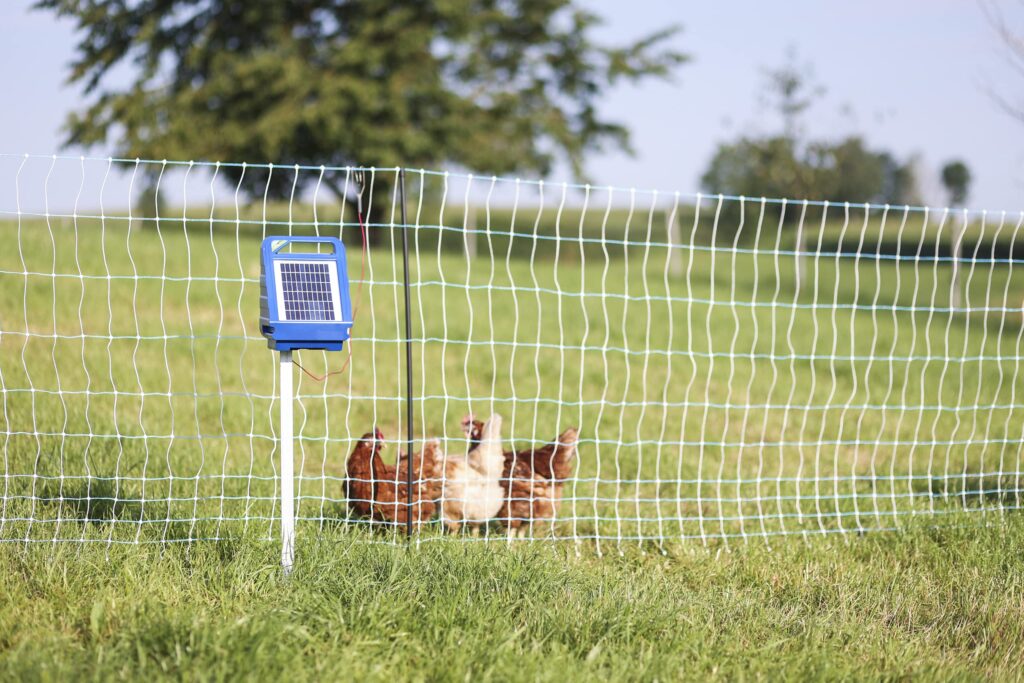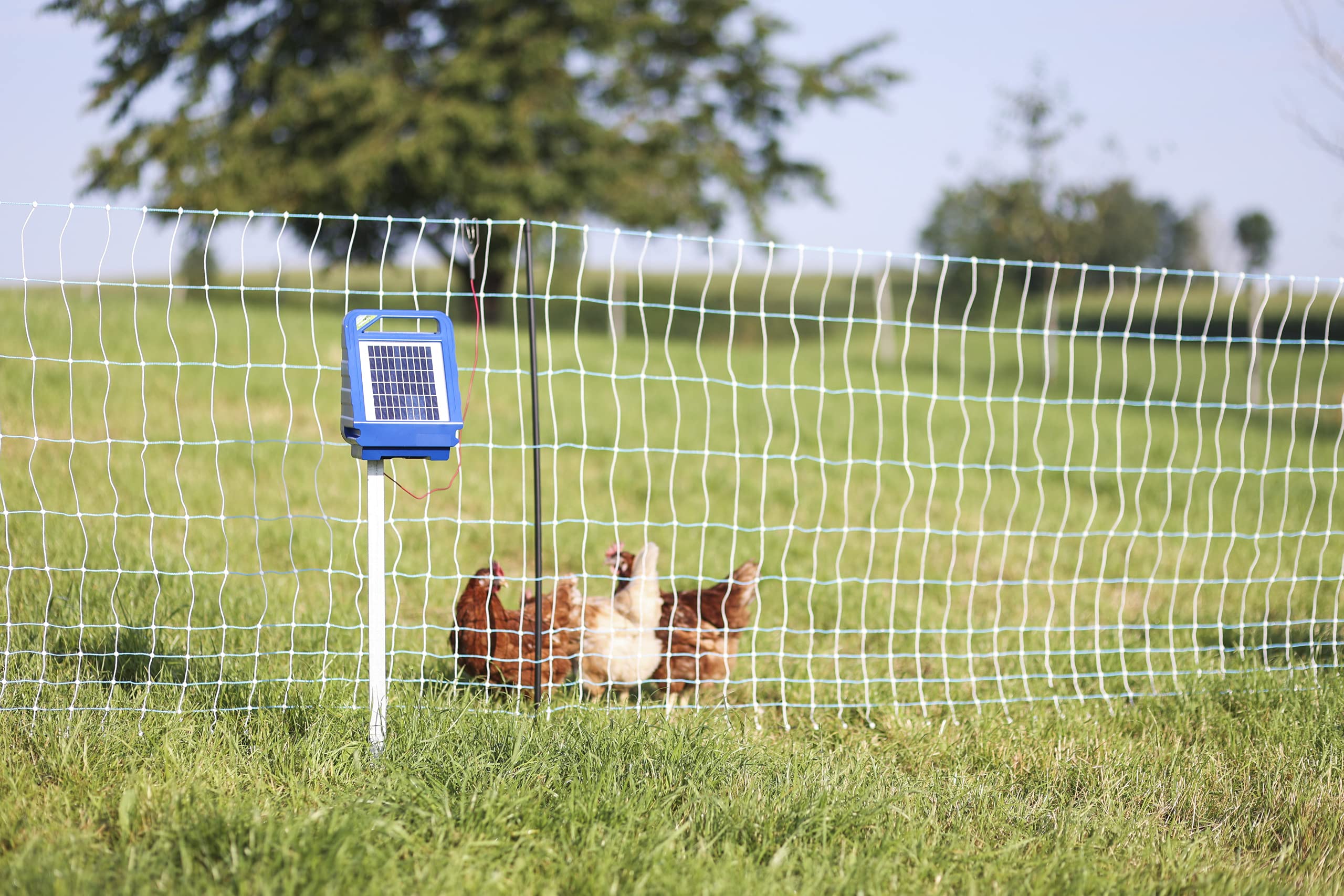
Electric Poultry Fencing: Protecting Your Flock from Predators
Raising poultry, whether it’s chickens, ducks, turkeys, or geese, can be a rewarding experience. However, it also comes with its own set of challenges, chief among them being protecting your flock from predators. Foxes, coyotes, raccoons, opossums, hawks, and even domestic dogs can pose a significant threat to your birds. One of the most effective solutions for safeguarding your poultry is installing an electric poultry fencing system. This article delves into the various aspects of electric poultry fencing, including its benefits, components, installation, maintenance, and safety considerations.
Why Choose Electric Poultry Fencing?
Traditional fencing, while providing a physical barrier, often isn’t enough to deter determined predators. Many animals can dig under, climb over, or simply break through conventional fences. Electric poultry fencing, on the other hand, provides a psychological barrier. The brief, but unpleasant shock deters predators from attempting to breach the fence, teaching them to avoid the area altogether. The system is also effective in containing your birds within a designated space.
- Effective Predator Deterrent: Delivers a safe, yet unpleasant shock that discourages predators.
- Improved Flock Containment: Prevents birds from wandering off and getting lost or injured.
- Cost-Effective: Can be more affordable than building a solid, predator-proof enclosure.
- Easy to Install and Maintain: Relatively simple to set up and requires minimal upkeep.
- Versatile: Can be adapted to various terrains and flock sizes.
Components of an Electric Poultry Fencing System
A complete electric poultry fencing system consists of several key components:
Energizer (Charger)
The energizer is the heart of the system. It converts standard electricity into high-voltage pulses that are sent through the fence wires. Energizers are rated in joules, which indicates the amount of energy delivered per pulse. Choose an energizer with sufficient joules to power the entire fence length and deter the specific predators in your area. Solar-powered energizers are a popular option for remote locations or for those seeking a more sustainable solution. [See also: Choosing the Right Fence Energizer]
Fence Wire or Netting
Electric poultry fencing can utilize either wire or netting. Wire fencing typically consists of multiple strands of conductive wire, spaced at varying heights. Netting, on the other hand, is a pre-fabricated mesh made of conductive strands woven together. Netting offers better containment and is particularly effective against smaller predators like weasels. Consider the size of your poultry and the types of predators you need to protect against when selecting the appropriate fencing material.
Grounding System
A proper grounding system is crucial for the effectiveness of the electric poultry fencing. The ground rods provide a path for the electrical current to return to the energizer after a predator or bird touches the fence. Typically, multiple ground rods, spaced several feet apart, are driven deep into the ground. The number of ground rods required depends on the size of the energizer and the soil conditions. Drier soils require more grounding. [See also: Properly Grounding Your Electric Fence]
Insulators
Insulators are used to attach the fence wire or netting to the fence posts while preventing the electrical current from grounding out. Different types of insulators are available to accommodate various post types, such as wood, metal, or fiberglass. Selecting the correct insulators is essential for maintaining the effectiveness of the fence. Corner insulators are particularly important for withstanding the tension of the fence wires at corners.
Fence Posts
Fence posts provide the structural support for the electric poultry fencing. They can be made of wood, metal, or fiberglass. The height of the posts should be appropriate for the height of the fence. Space the posts evenly along the fence line, typically every 8-10 feet. Consider using step-in posts for temporary or portable fencing applications. [See also: Selecting the Right Fence Posts]
Gate System
A gate system allows you to easily access the poultry enclosure. The gate should be electrified to maintain the integrity of the fence. Gate kits are available that include the necessary hardware for creating an electrified gate. Ensure the gate is properly grounded to prevent shocks when opening and closing it.
Voltage Tester
A voltage tester is an essential tool for troubleshooting and maintaining your electric poultry fencing. It allows you to quickly check the voltage level at various points along the fence to identify any shorts or breaks in the wire. Regular voltage testing will help ensure that your fence is operating effectively. [See also: Maintaining Your Electric Fence]
Installing Electric Poultry Fencing
Installing electric poultry fencing is a relatively straightforward process, but it requires careful planning and attention to detail. Here’s a step-by-step guide:
- Plan the Fence Layout: Determine the area you want to enclose and mark the fence line. Consider the terrain and any obstacles that may need to be addressed.
- Install the Grounding System: Drive the ground rods deep into the ground, spacing them several feet apart. Connect the ground rods to the energizer using grounding wire.
- Set the Fence Posts: Install the fence posts along the marked fence line, spacing them evenly.
- Attach the Insulators: Attach the insulators to the fence posts, ensuring they are securely fastened.
- Run the Fence Wire or Netting: String the fence wire or netting through the insulators, maintaining proper tension.
- Connect the Energizer: Connect the energizer to the fence wire and the grounding system.
- Test the Fence: Use a voltage tester to check the voltage level at various points along the fence.
- Install the Gate System: Install the electrified gate system, ensuring it is properly grounded.
Maintaining Your Electric Poultry Fencing
Regular maintenance is essential for ensuring the long-term effectiveness of your electric poultry fencing. Here are some key maintenance tasks:
- Clear Vegetation: Keep vegetation from touching the fence wire or netting, as this can drain the current and reduce the effectiveness of the fence.
- Check for Broken Wires or Insulators: Regularly inspect the fence for any broken wires or damaged insulators. Replace any damaged components immediately.
- Test the Voltage: Use a voltage tester to regularly check the voltage level along the fence.
- Maintain the Energizer: Follow the manufacturer’s instructions for maintaining the energizer.
- Inspect the Grounding System: Check the grounding system for corrosion or damage.
Safety Considerations
While electric poultry fencing is generally safe, it’s important to take certain safety precautions:
- Use a Low-Impedance Energizer: Low-impedance energizers are designed to deliver a short, safe shock.
- Post Warning Signs: Post warning signs along the fence line to alert people and animals to the presence of an electric fence.
- Keep Children Away: Keep children away from the fence and educate them about the dangers of touching it.
- Supervise Pets: Supervise pets around the fence until they learn to avoid it.
- Never Touch a Fence During a Lightning Storm: Avoid touching the fence during a lightning storm.
Choosing the Right Electric Poultry Fencing System
Selecting the right electric poultry fencing system depends on several factors, including the size of your flock, the types of predators in your area, and your budget. Consider the following when making your decision:
- Flock Size: The size of your flock will determine the length of fencing required.
- Predator Pressure: The types of predators in your area will influence the type of energizer and fencing material you need.
- Terrain: The terrain of your property will affect the type of posts and insulators you need.
- Budget: The cost of the system will vary depending on the components you choose.
Conclusion
Electric poultry fencing is an effective and humane way to protect your flock from predators. By understanding the components, installation, maintenance, and safety considerations of electric poultry fencing, you can create a secure environment for your birds and enjoy the peace of mind that comes with knowing they are safe. Investing in a quality electric poultry fencing system is an investment in the health and well-being of your poultry and the sustainability of your farming operation. Remember to always prioritize safety and follow the manufacturer’s instructions for all components of your electric poultry fencing system. The use of electric poultry fencing allows for a safe and effective way to keep poultry protected from predators. It is a popular and reliable method for farmers and hobbyists. With proper installation and maintenance, an electric poultry fencing system can provide years of reliable protection. Consider the benefits of electric poultry fencing and choose the system that best fits your needs. Electric poultry fencing: A smart choice for protecting your flock. Many find electric poultry fencing to be a cost effective solution too.

